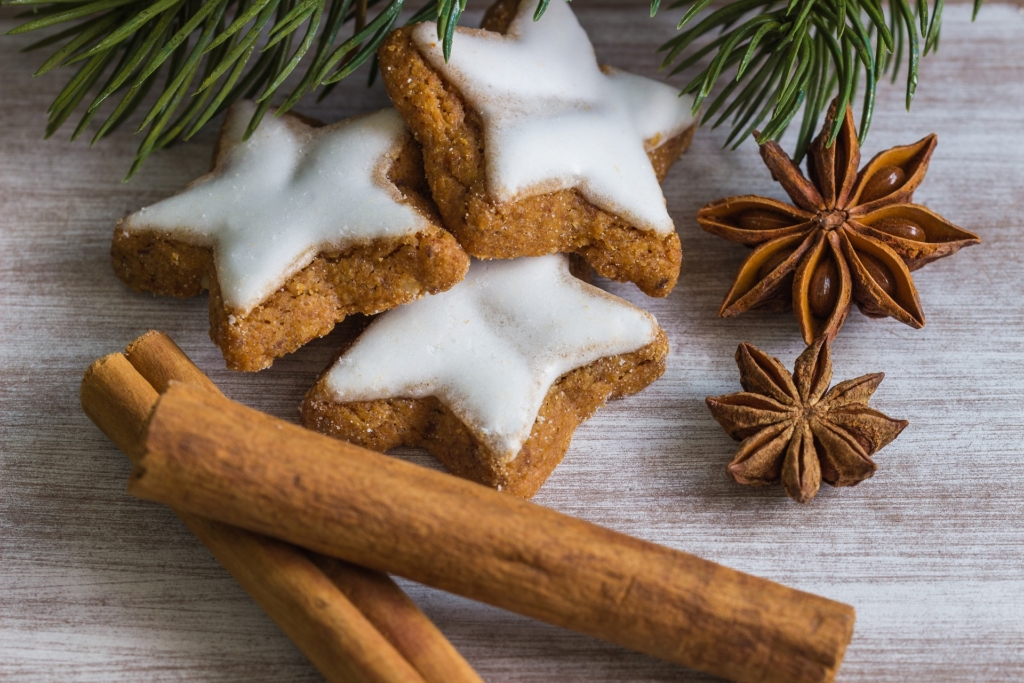This reddish-brown spice brings a warm flavor to any dish that it is added to, be it sweet or savory.
History of Cinnamon
Originating from the islands of Sri Lanka, then known as Ceylon, the origin of cinnamon can be dated back to 2800 BC as per Chinese writings. Cinnamon is still referred to as kwai in the Cantonese language.
Each country has a unique history associated with cinnamon. While the ancient Egyptians used these pungent-smelling spice plants for the embalming process, the Italians called it what it resembled the most, that is canella, which means “little tubes”.
In medieval times cinnamon was used not only for cooking, but it was also used to create herbal medicines to treat coughing and sore throats. Cinnamon was also widely used to preserve meat since it contained phenols that prevent the growth of bacteria responsible for spoiling meat.

Flavor of Cinnamon
The flavor of cinnamon is a combination of sweet and slightly sour notes, while at the same time it provides a feeling of warmth and spiciness on the palate. With its diverse flavor profile cinnamon can be added to any food item and it will definitely stand out.
Health Benefits of Cinnamon
Cinnamon, consisting of antimicrobial and antifungal properties, is widely used in toothpaste and oral hygiene products. With its anti-inflammatory properties, cinnamon also provides relief from digestive discomforts.
Apart from these uses, some studies also claim that cinnamon helps in reducing blood pressure and blood sugar levels and also prevents the risk of type 2 diabetes. However, there is no 100% definite proof for this.
Culinary Benefits of Cinnamon
With a diverse flavor profile, cinnamon can be used in a variety of recipes and is a delightful ingredient for amateur cooks as well as renowned chefs. Cinnamon can be added to savory or sweet dishes, be it an entree, main course, or dessert to enhance the flavor of the dish.
Want to check out some cinnamon recipes? We have got you covered. From Cinnamon Rolls to Apple Sauce to Cinnamon Raisin Strata, we love using cinnamon for a variety of dishes. For more recipes that utilize this delicious spice, click here.

Types of Cinnamon
There are mainly four types of cinnamon used in the culinary world: Cinnamomum Cassia, or Cassia or Chinese Cinnamon.
1) Cassia. With its dark and thick quills, often appearing in a double spiral shape, Cassia is the most common cinnamon used in East Asia and the United States. This type of cinnamon gives out an extremely spicy, bitter-sweet flavor due to the high content of cinnamaldehyde.
2) Cinnamomum Loureiroi also known as Vietnamese or Saigon Cinnamon. This type of cinnamon is closely related to Chinese cinnamon but has a higher cinnamaldehyde content. This variety is widely used in Vietnamese soups and broth; try our recipe for Beef Pho to try it for yourself.
3) Cinnamomum Burmannii or Indonesian Cinnamon. The Indonesian Cinnamon is less spicy as compared to the previous cinnamons discussed. These cinnamon rolls are reddish-brown on the outside with a greyish brown color on the inside. This variety of cinnamon is mainly used in the preparation of beef rendang.
4) Cinnamon Verum also known as Cinnamon Zeylanicum or Ceylon. Ceylons are the original cinnamons, originated from Sri Lanka. This variety is popular all across South Asia and Mexico. Ceylon cinnamon rolls are thin, brittle, and smooth, with red-brown color on the inside and a tan color on the outside.Ceylon cinnamons are the mildest ones out of all the four types.
Storage
In the case of cinnamon, the fresher the better. This spice needs to be stored in an airtight container. The cinnamon powder will retain its flavor for a few months while cinnamon sticks retain their flavor for almost a year.
Feature Image: Theo Crazzolara from Pixabay



